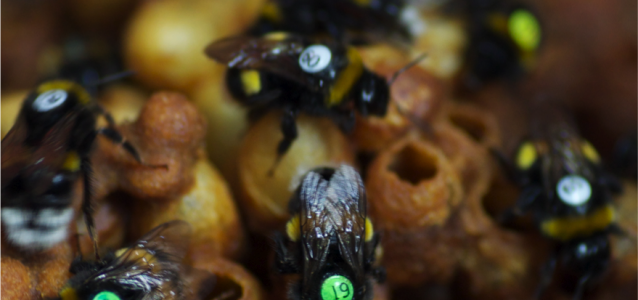Ben Sadd and I recently wrote a review about heterogeneity in infection outcomes. We were tasked with writing a review about the bumblebee-trypanosome system that we work on, but we wanted to expand the discussion a bit further than simply explaining the workings of our own system. We tried instead to use what is known in our system, which has become something of a model of host-parasite interactions, to explore the causes and consequences of variation in disease resistance that exists in nature. In the review we talk about a great many things but the key point in my mind is that the relationship between parasites and their hosts is complex, infection outcome is rarely certain, and we need to learn why that is the case to make much headway in our understanding of disease dynamics. There are lots of causes of variation in disease outcome, including both the genetic background of the host, and the parasite, the history of the host, the environment, the other microorganisms that it has encountered, both parasitic and beneficial, all play a role in whether that individual gets sick.
When designing experiments, it is often a good idea to reduce variation in order to clearly assess what of the controlled factors are important in whatever it happens to be that you are measuring. This reduces any superfluous noise and allows you to better detect how your factors are involved. But while this approach is very good at finely attributing relationships under controlled conditions it can suffer from being over controlled. This may sound like I’m badmouthing controlled experiments, but I’m not; they are vital. What I am suggesting, and what Ben and I talk about in our review, is that variation on both the host side and the parasite side can be important in determining disease outcome and this variation could also suggest how general the findings are. For instance in my work, we see huge variation in how different families (colonies) of our bumblebee host respond to different clones of our trypanosome parasite species. If we were to base our understanding about how bumblebees interact with trypanosomes based on a single host-parasite genetic combination, we would be missing a huge part of the story.

